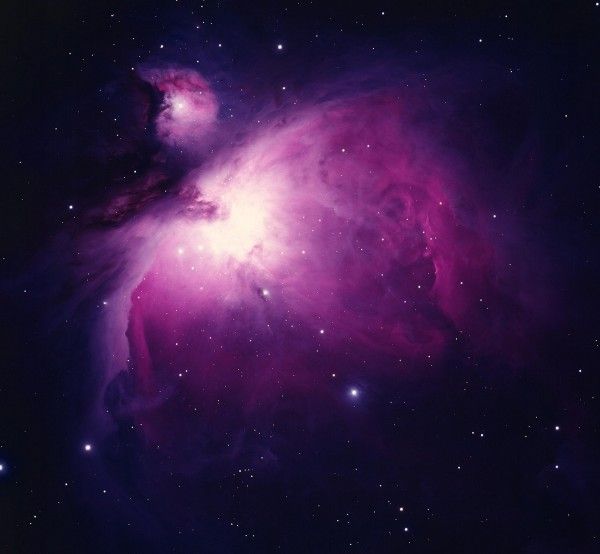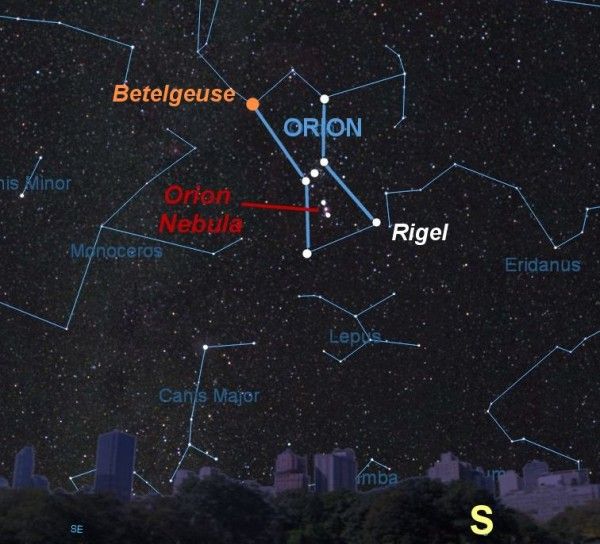As festivities kick off the New Year, sky-watchers will revel in nights filled with shooting stars, the king of planets shining like a beacon, and grand planetary spectacles blooming in the heavens.
 Great Orion Nebula.
Great Orion Nebula. With the moon reaching a new phase for New Year’s Eve, December 31, the dark skies are perfect for hunting down one of the most famous deep-sky treasures—the Orion Nebula, or Messier 42. This grand star factory, located some 1,400 light-years from Earth, is nestled within the bright constellation Orion the Hunter, visible in the southern sky on late evenings this week.
Look for a line of three bright stars—this is the belt of Orion. At a right angle below the belt is the sword, made up of a fainter line of three stars. With the naked eye (or binoculars), the center star in the sword appears fuzzy. But even the smallest telescope will reveal that this fuzzy star is the Great Orion Nebula, a flower-shaped, glowing cloud of fluorescent gas and dust that stretches some 40 light-years across. The nebula shines thanks to intense radiation bellowing out of four massive baby stars, each one no more than a million years old (our sun is nearly 5 billion years old), embedded within the center of the cloud.

Recent observations with the Hubble Space Telescope have shown that Orion is also home to hundreds of other smaller infant stars, ones waiting to form solar systems much like our own.
Moon and Venus. Soon after sunset on Wednesday, January 2, a thin crescent moon pokes over the southwestern horizon while perched above a bright, starlike Venus.
Through a backyard telescope, the goddess of love will resemble Earth’s lunar companion, appearing as a tiny, thin crescent. Look carefully and you will notice that both crescents are oriented the same way, toward the sun.
Mars at Aphelion. At 7 p.m. EST on Thursday, January 2, the red planet reaches its farthest point in its orbit from the sun, 154.9 million miles (249 million kilometers) away. Sky-watchers can get a glimpse of ruddy-colored Mars rising in the east after midnight, local time, and see it climbing high in the south by dawn.
New Year’s Shower. In the predawn hours of Friday, January 3, the first meteor shower of the year, the Quadrantids, reach their peak. Peak rates that morning will range from 60 to 120 shooting stars per hour, when viewed from a dark location.
The Quadrantids get their name from an obsolete constellation, Quadrans Muralis. They appear to radiate out from the northeast sky, just off the Big Dipper’s handle.
Jupiter Opposition. The largest planet in the solar system reaches official opposition on Sunday, January 5, rising opposite in the sky from the setting sun, and offering its biggest and brightest viewing opportunity to astronomers.
Once Venus sets in the early evening, Jupiter becomes the brightest starlike object of the night. Jove can’t be missed, as it rises in the east soon after sunset and rides high in the southern sky by midnight.